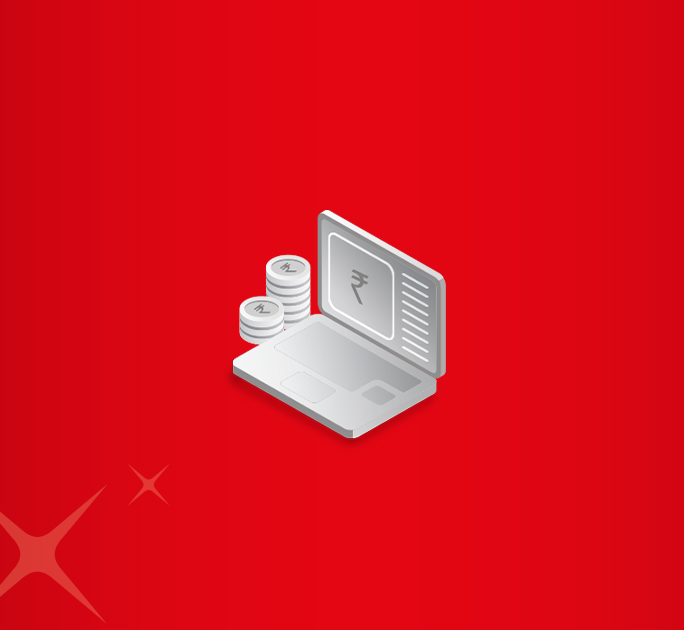What are balanced or hybrid mutual funds? It is crucial that investors diversify and not put all their money in a single asset class. In this way, when one particular asset class is not performing well, the loss is minimised. This means you need to spread your investments across equity and debt. Reduced risk can be achieved by investing in both equity and debt. Alternatively, with balanced or hybrid funds, you can do the same but in a smart way.
Let us see how hybrid or balanced funds work. Here, the fund manager invests in a mix of equity and debt in a specific ratio, the scheme’s orientation determines allocation in each.
Primarily, these funds aim to strike a balance. Putting all your money in equities is risky. Investing in one lowers your risk and lets you reap market benefits.
If a scheme is primarily equity-oriented, it will have at least 65 percent of its underlying assets in stocks. Similarly, a debt-oriented balanced scheme invests at least 65 percent in debt instruments.
SEBI has re-classified mutual fund schemes to streamline schemes, and it’s now easier to understand the objectives of hybrid funds. The purpose is also to standardise the schemes’ categories and their respective characteristics. The new classification has seven types of funds under the hybrid category. The below table explains various types of balanced funds at a glance.
| Category on schemes | Scheme Characteristics | Risk | Investment horizon |
|---|---|---|---|
| Conservative Hybrid | Investment in equity & equity-related instruments between 10 percent and 25 percent of total assets; investment in debt instruments between 75 percent and 90 percent of total assets. | Low | 2-3 years |
| Balanced Hybrid | Equity & equity-related instruments between 40 percent and 60 percent of total assets; debt instruments between 40 percent and 60 percent of total assets. No Arbitrage is permitted in this scheme. | Moderate | 5-10 years |
| Aggressive Hybrid | Equity and equity-related instruments between 65 percent and 80 percent of total assets; debt instruments comprise between 20 percent and 35 percent of total underlying assets. | High | 5-10 years |
| Dynamic Asset Allocation (a.k.a) Balanced Advantage | Dynamic management of assets. | Moderate | 2-3 years |
| Multi-Asset Allocation | This fund invests a minimum of 10 percent each in three asset classes. Underlying securities would be equity, debt and any other asset class. | Depends on the composition of the fund | 3-5 years |
| Arbitrage Funds | Scheme following arbitrage strategy. Minimum investment in equity & equity-related instruments - 65 percent of total assets. | Low | 6-12 months |
| Equity Savings | The minimum investment in equity & equity-related instruments required – 65 percent of total assets and minimum investment in debt - 10 percent of total assets. | Moderate | 1-3 years |
Let us now discuss each category in detail:
Conservative Hybrid Funds: These are typically for conservative investors and are predominantly debt-oriented. They offer capital protection with minimal equity exposure to investors. You can say they work like fixed deposits with periodic returns. Conservative hybrid funds are great if you need exposure to equities. Such funds are also ideal for medium-term investment horizons of 2-3 years.
Balanced Hybrid Funds: These funds have equal proportions in debt and equity and are ideal for those who can tolerate a bit of risk. You need to look at a long-term investment horizon for these to optimise returns.
Aggressive Hybrid Funds: Those who have a high appetite for risk, should go for such funds. The fund manager allocates up to 80 percent in equity-based securities. A typical portfolio can include mid-cap and even small-cap. These two makes the asset composition riskier than pure large cap funds. To tide market volatilities and get good returns, it makes sense to have long-term investment milestones of 7-10 years.
Multi-asset-allocation: If you choose multi-asset-allocation funds, your portfolio composition will mandatorily be in three asset classes. The prerequisite proportion in each asset class is at least 10 percent. The primary asset classes are equity and debt; the third portion is either in precious metals like gold, derivatives or commodities. These funds allow you to diversify your portfolio in non-co-related assets. Hence, the overall risk of the portfolio is minimised. These funds also do away with the cumbersomeness of investing separately in different asset classes. So you benefit from dynamic exposure and professional fund management.
Dynamic Asset Allocation: As the name suggests, portfolios of these funds are managed dynamically. Equity and debt underlying securities are switched out based on pre-determined market indicators. These schemes are suited chiefly for first-time and conservative investors because the fund manager reduces equity exposure when markets get expensive.
Arbitrage funds: These schemes follow a strategy of arbitrage. Price differentials in cash and derivatives are leveraged to generate returns. Some investors want to park their money at a lower risk in a volatile market. Their investment horizon is short-term. Such investors should choose such arbitrage funds.
Equity Savings: These funds have a maximum 65 percent of their total assets invested in equity and equity-related assets (including arbitrage). A minimum of 10 percent is invested in debt. Equity savings aim to balance risks with a composition of equity, debt, and arbitrage. The equity component has the potential to provide higher returns. The debt part enables stable returns. The arbitrage part ensures that these funds make the most from volatile market conditions. These funds are ideal for a 1-3 year investment horizon.
Who should invest in hybrid funds?
Hybrid mutual funds in India are for both beginners and experienced investors. There are funds to suit all investment types. New investors can get exposure to equity markets through conservative hybrid funds. Investors having a low-risk appetite can also choose arbitrage funds. Investors who want to manage volatility can invest in balanced hybrid funds. They are useful to park money with low risk for short-term. Experienced investors can opt for aggressive hybrid funds. Conservative hybrid funds can also provide a regular monthly income to investors. Earlier, such plans were known as monthly income plans. After reclassification, they now fall into this category.
Hybrid funds come with in-built asset allocation. The kind of funds you choose will depend on your risk appetite. Also, the investment time horizon will play its part. Hybrid funds thus, suit a wide variety of investors. Investors with different risk profiles can invest in hybrid funds.
How to invest in hybrid funds
Let’s take a look at how to invest in hybrid or balanced funds.
Link your investment to a particular goal: It is essential to the purpose of investing to determine the time horizon. You can choose a fund that matches your personal financial goal.
Know your risk appetite: Different hybrid funds come with different levels of risk. Invest in a fund which aligns with your risk tolerance. If you have a high risk appetite certain funds would suit you. This would include aggressive hybrid and equity savings funds. If your risk appetite is low, go for conservative hybrid funds. Dynamic asset allocation funds let you mitigate market risks.
Go through the SIP route: Mutual fund investments work best when done through SIPs (Systematic Investment Plans). An SIP works on the concept of rupee cost averaging. Further, it means that you do not try to time markets. It also inculcates disciplined savings that help to create wealth in the long term.
Want the best of both equity and debt in a single plan? Balanced hybrid funds are here for you.
DBS Bank offers Mutual Funds that are instant, paperless, signatureless – even transaction fee-less! What’s more? You get to choose from 250+ Mutual Funds across 15 top-performing asset management companies. So why wait? Login to digibank (app or internet banking) and start investing in a flash with instant Mutual Funds on DBS Bank.
Read up more on Mutual Funds here
Mutual Fund investments are subject to market risks, read all scheme related documents carefully before investing.






